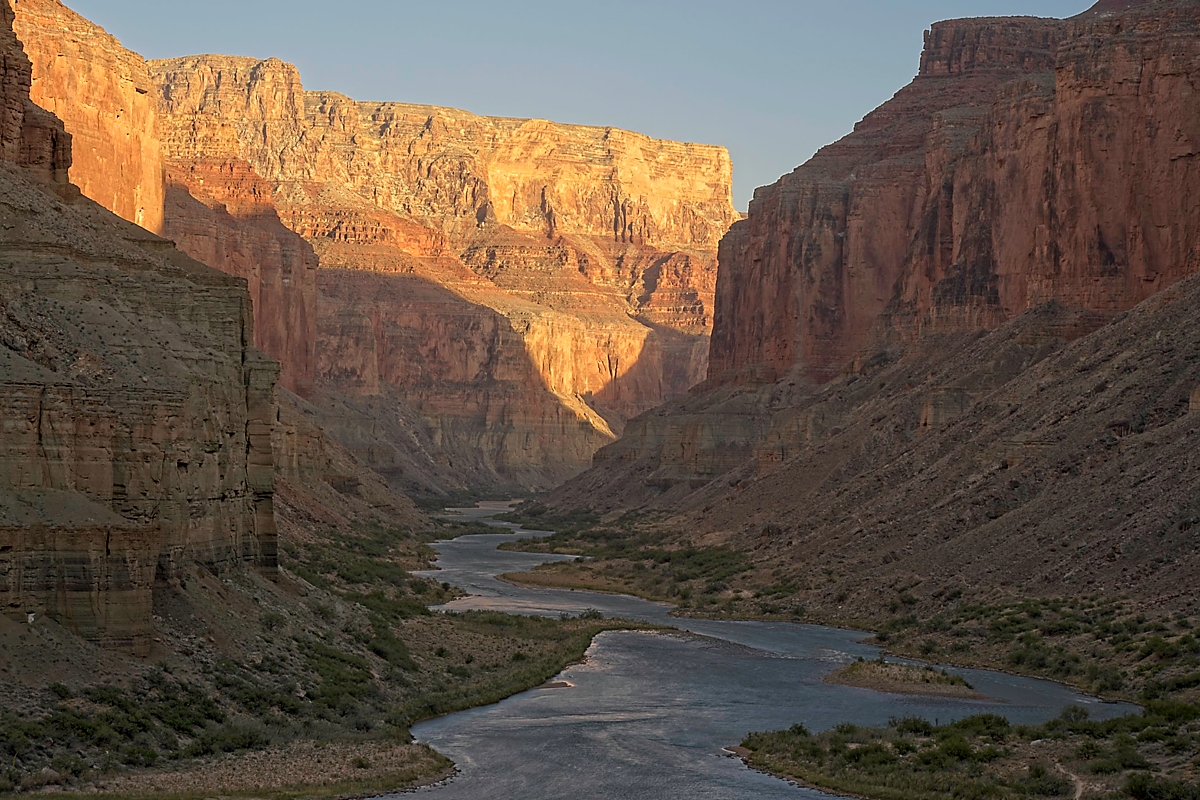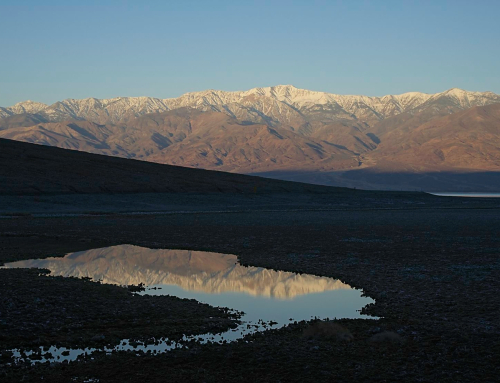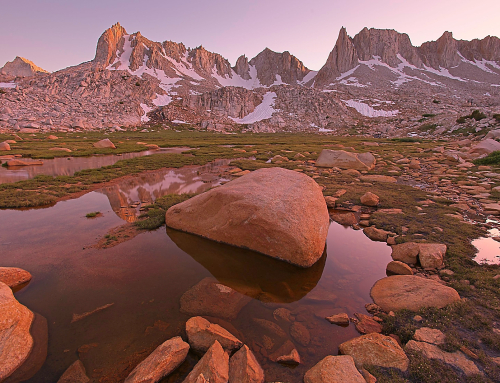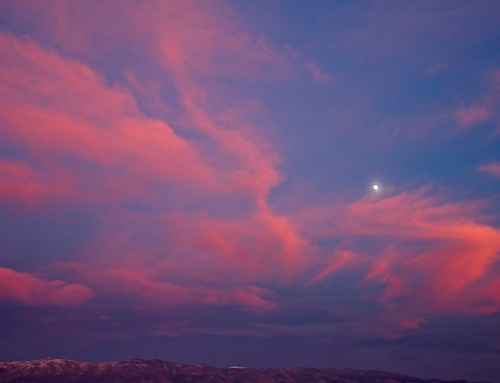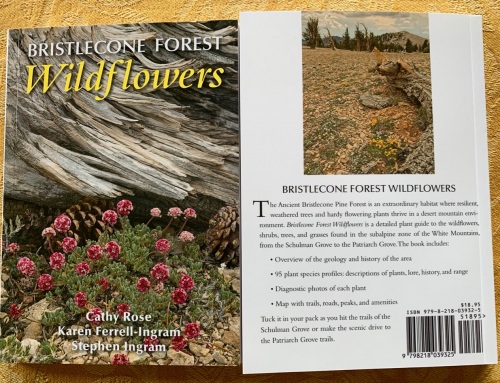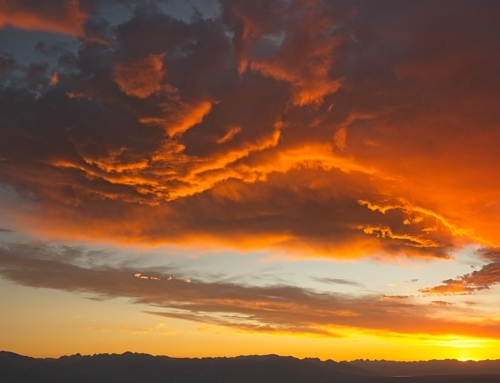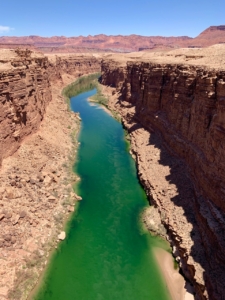
View of Mile 4 from Navajo Bridge, Upper Marble Canyon
Rafting 187 miles down the Colorado River through the Grand Canyon was an amazing journey, and an experience I’ll never forget. I’ve done several short river trips in small rafts, but never in a canyon so vast, a river so large, or a raft so big. The scale of everything was enormous! We launched aboard two huge motorized S-Rig rafts from Lee’s Ferry at the top end of Marble Canyon, and were soon immersed in the canyon’s steepening walls of Kaibab Limestone. This sedimentary rock and its abundant marine fossils are all that remains of a shallow sea that lapped against the western shores of Pangaea around 270 million years ago. It occurs at river level one mile in, but forms the rim of the Grand Canyon further on.
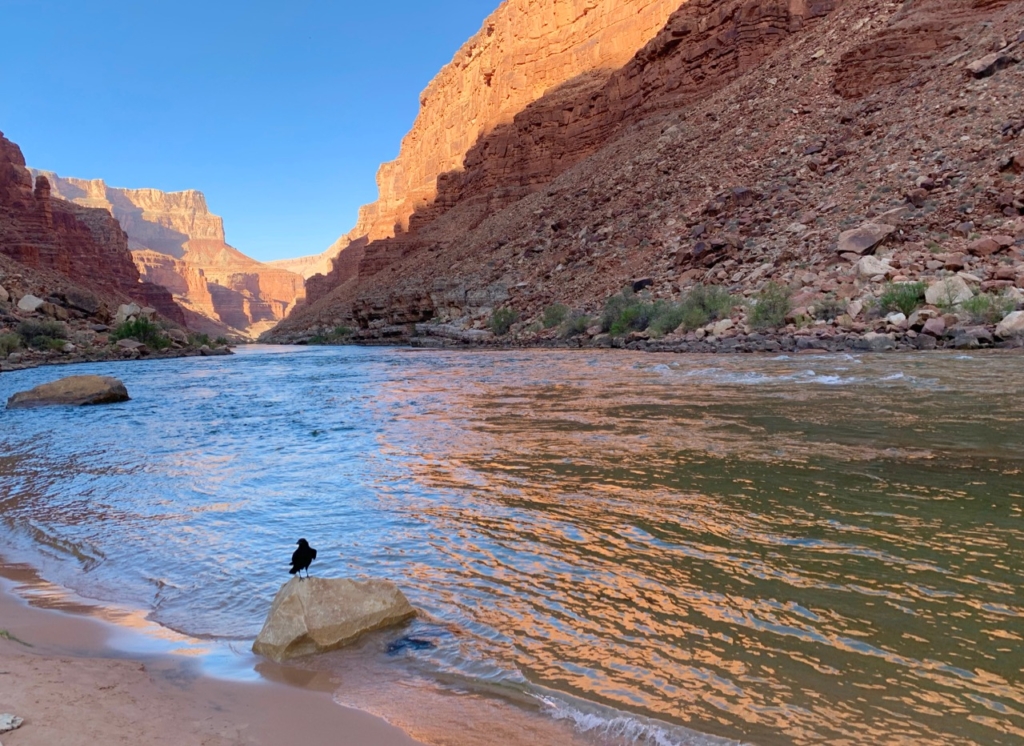
A raven waits for our departure to start clean-up duty
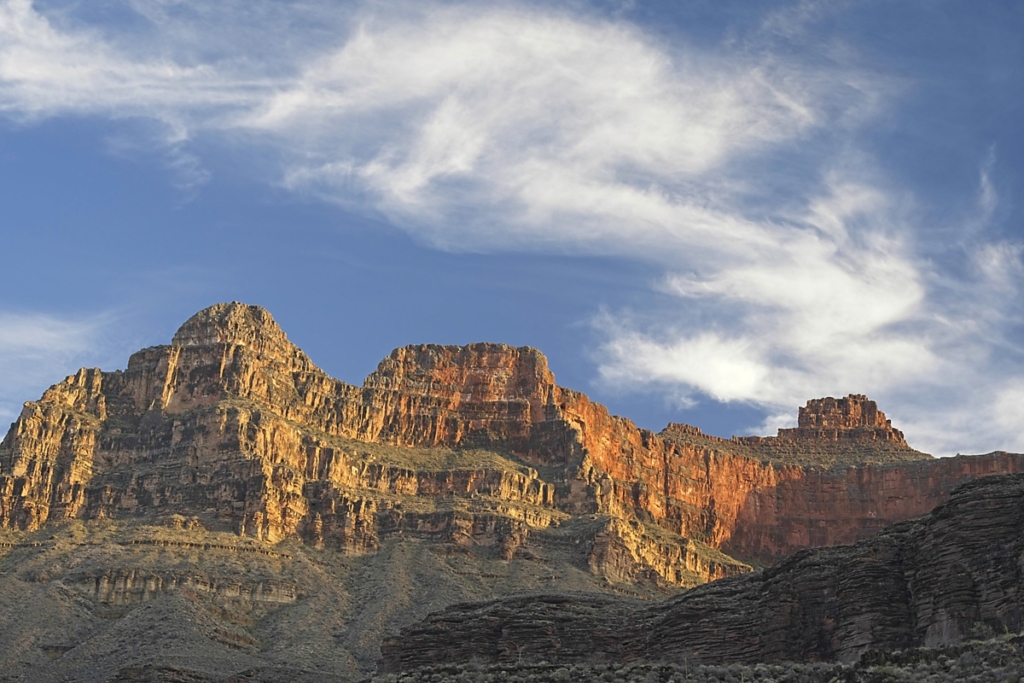
Evening light on Tyndall Dome and Wallace Butte, beneath cirrus clouds, from Colorado River, Grand Canyon National Park, AZ
The river was cold and clear, and it ferried us past sandstone spires, buttes, and cliffs, water-polished side canyons with waterfalls and hanging gardens, pictographs and Puebloan granaries. We watched mule deer and desert bighorn sheep browsing near the river. California condors soared high above flowering cacti and agaves, while violet-green swallows fed on insects over the river.
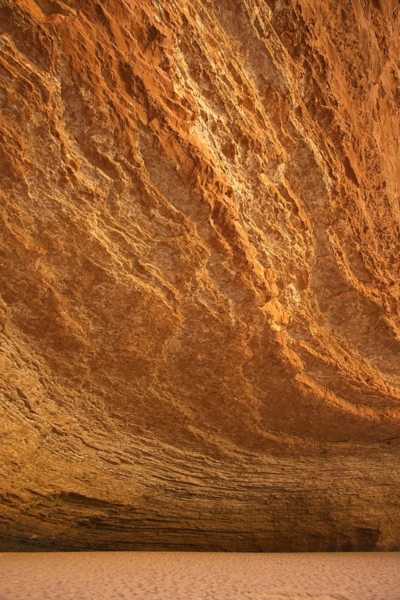
Limestone roof rock of Redwall Cavern.
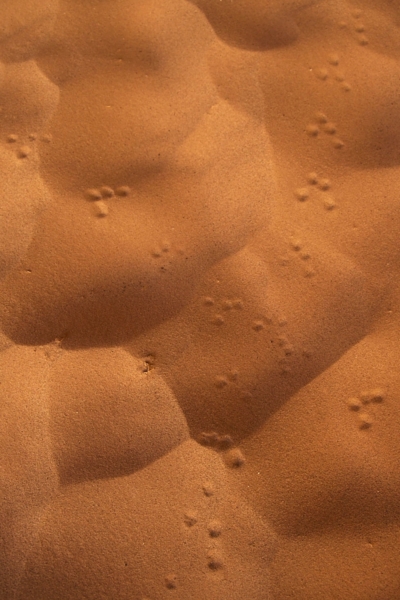
Canyon treefrog tracks on sand within Redwall Cavern.
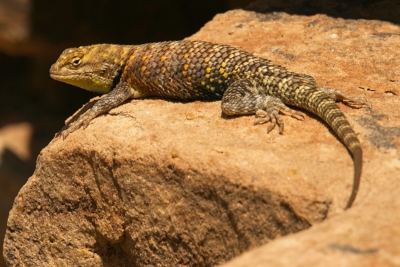
Desert spiny lizard, Sceloporus magister, at confluence of Little Colorado River.
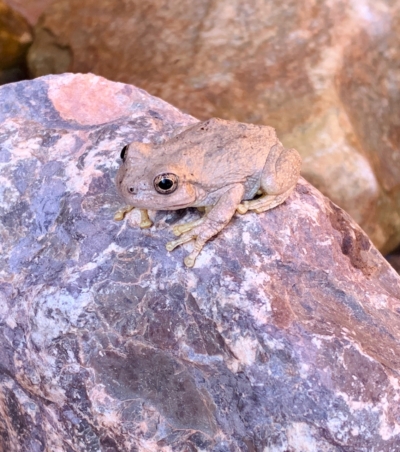
A Canyon treefrog, Dryophytes arenicolor, on a rock near the base of Deer Creek Falls.
With each passing mile the walls rose and the exposed rock grew older. Around 78 miles we entered the Upper Granite Gorge, an area with dark gray, fluted Vishnu Schist shot through with intrusions of pink Zoroaster Granite. These dense “basement rocks of the Grand Canyon,” are also known as the Vishnu Metamorphic Complex. These Vishnu Basement rocks formed some 1.7 billion years ago as metamorphosed volcanic rocks of the ocean floor or sedimentary rocks under the intense pressure and heat of an ocean trench beneath a Precambrian sea. It is especially evident from river level why the Grand Canyon is one of ten Natural Wonders of the World.
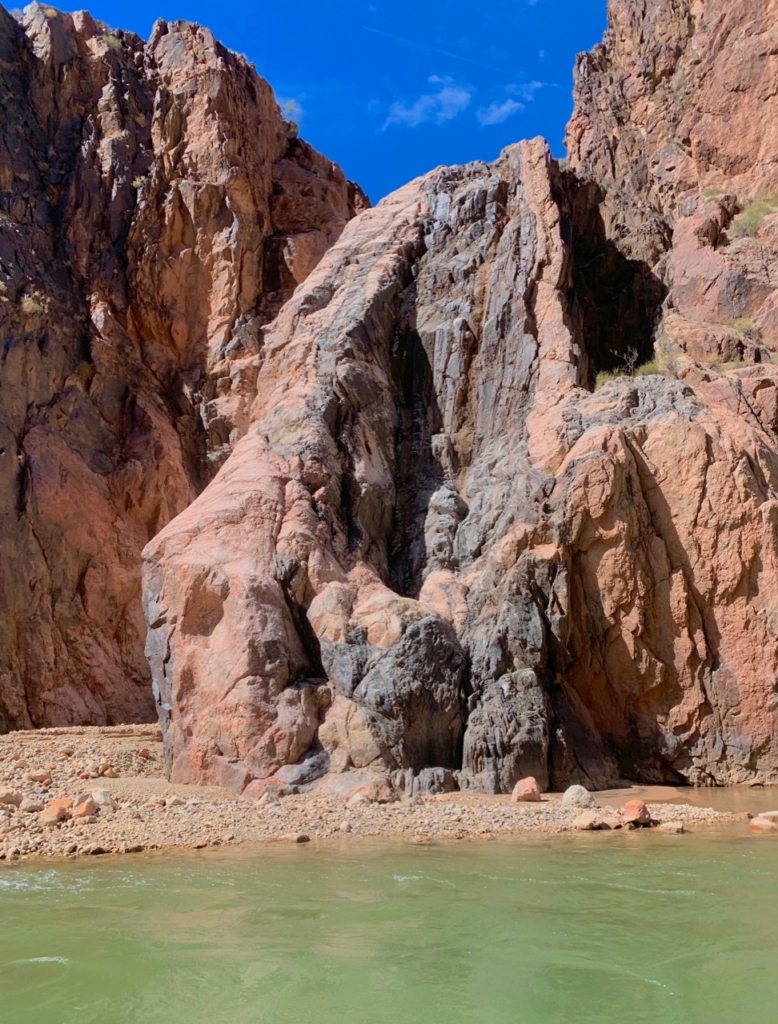
Dark gray Vishnu Schist and pink Zoroaster Granite, basement rocks of the Grand Canyon.
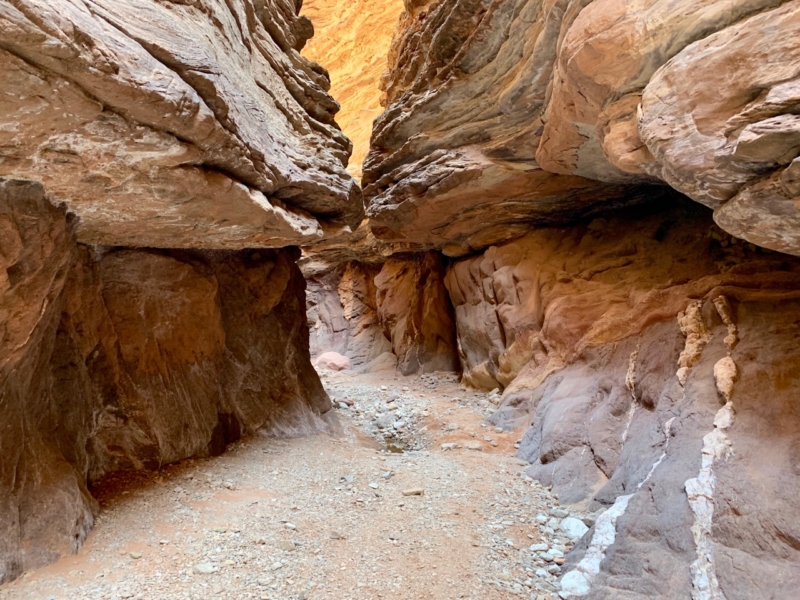
The Great Unconformity-the erosional contact point between 270-540 million year-old sandstone and limestone above mid-frame here, and 1.6-1.8 billion year-old schist, gneiss and granite below; Blacktail Canyon.
When we weren’t cruising slowly through the granite gorges or open canyons, we were splashing through 50-degree water while swooping through the Grand Canyon’s exciting rapids, some with drops of 15 to 30 feet. We swam in the beautifully blue water of the Little Colorado River, Deer Creek, the picturesque Elves Chasm and Havasu Creek. We had wonderful, hard-working guides and a great, fun-loving group of rafters, including families, old couples, young couples, old friends, and new friends. Despite a night or two of gale force winds, blowing sand, and a guitar blown overboard (but retrieved undamaged in an eddy the next morning), it was all really fun!
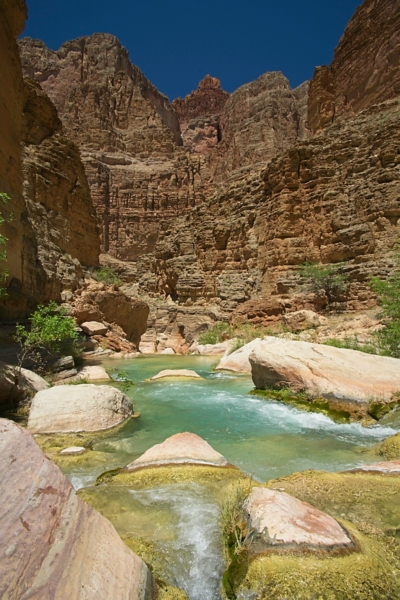
Havasu Creek, Grand Canyon National Park, AZ
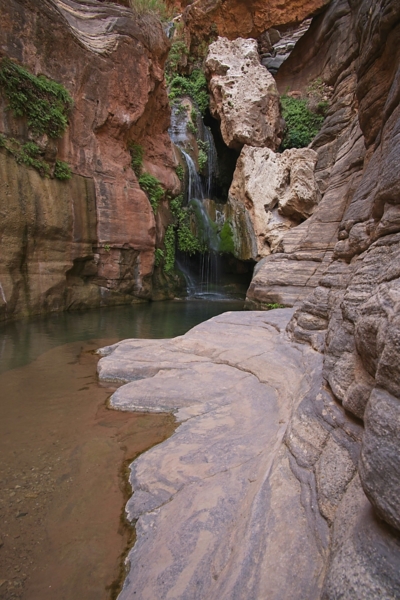
Polished Tapeats Sandstone and Travertine rock with maidenhair fern and other mesic plants, Elves Chasm.
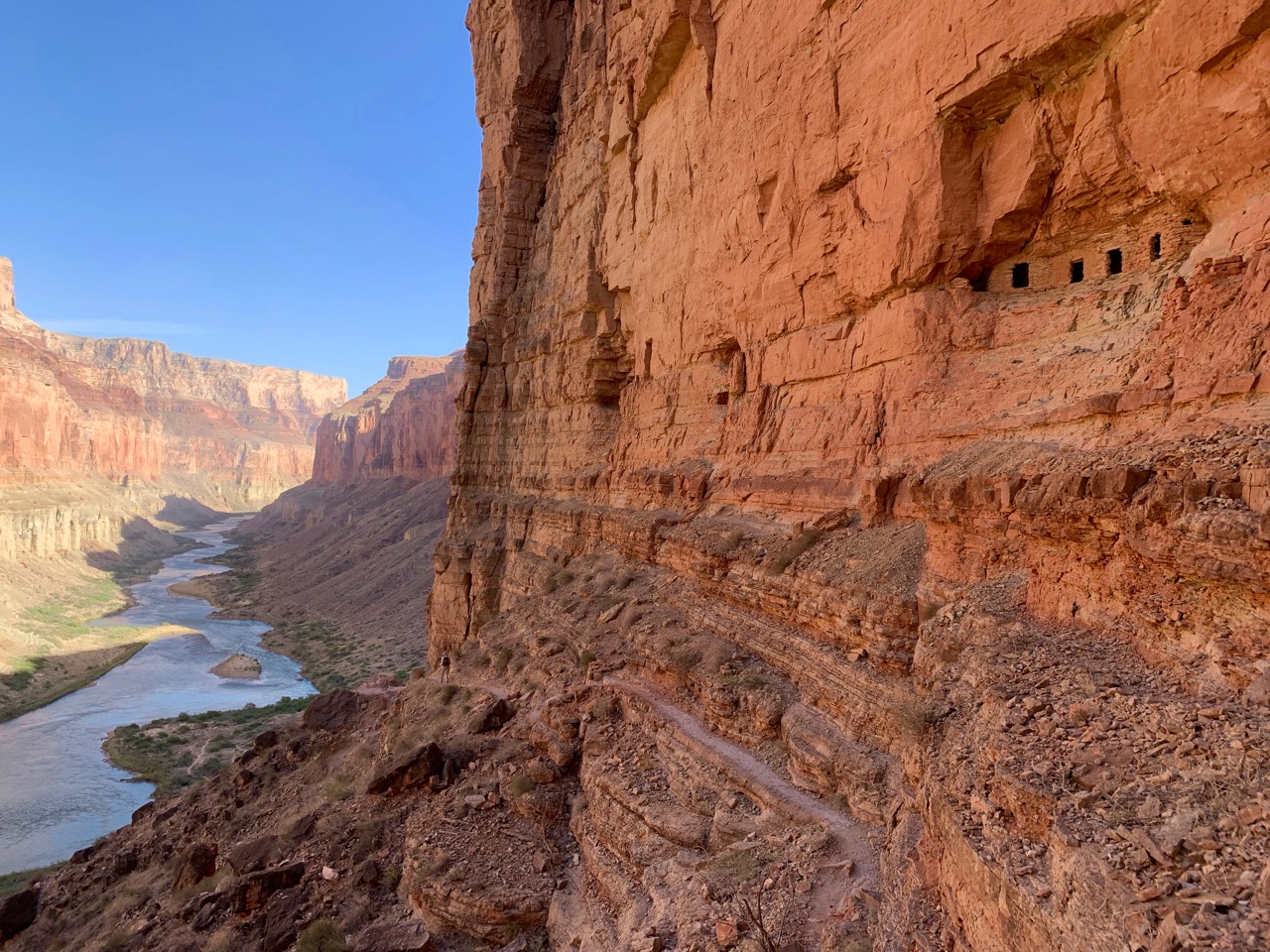
Carved into the sandstone 900 years ago by Puebloans, these granaries were used for storing corn, pumpkin seeds, and other grains that were grown at Nankoweap Creek delta below.
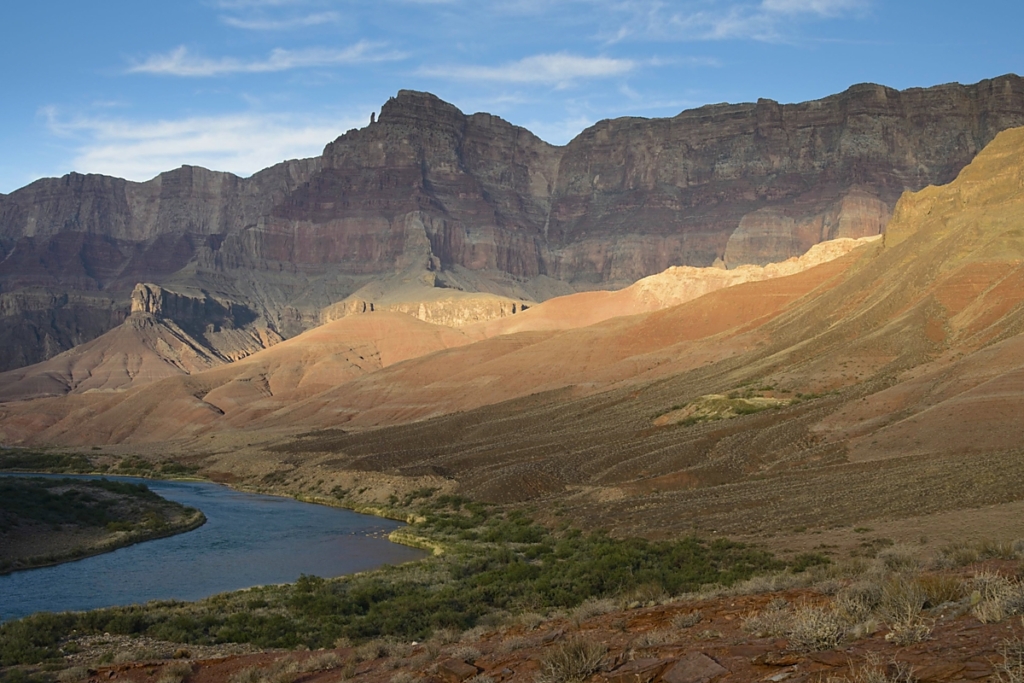
Palisades of the Desert above the Colorado River, near Furnace Flats, Grand Canyon National Park.
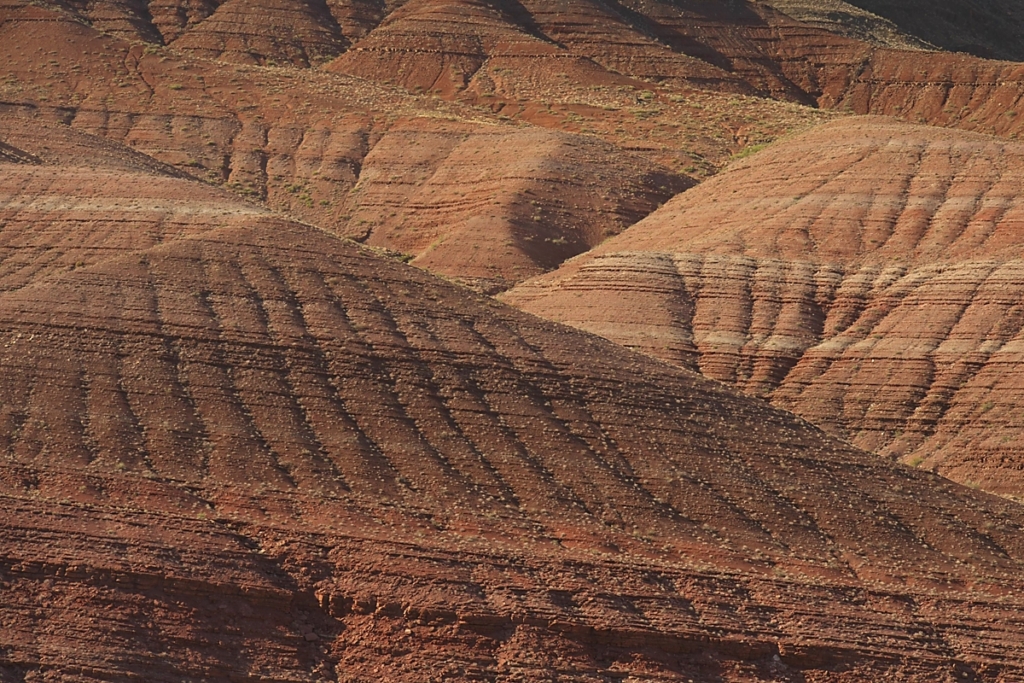
Erosional patterns in 1.15 billion-year-old Dox Sandstone, Furnace Flats.
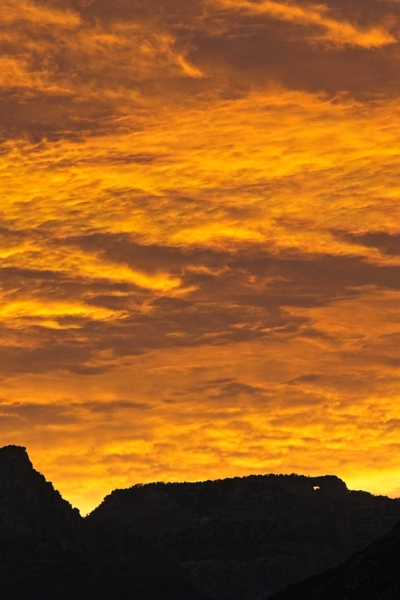
Altocumulus and altostratus clouds at sunset, with Angel’s Window in central butte, Grand Canyon National Park, AZ
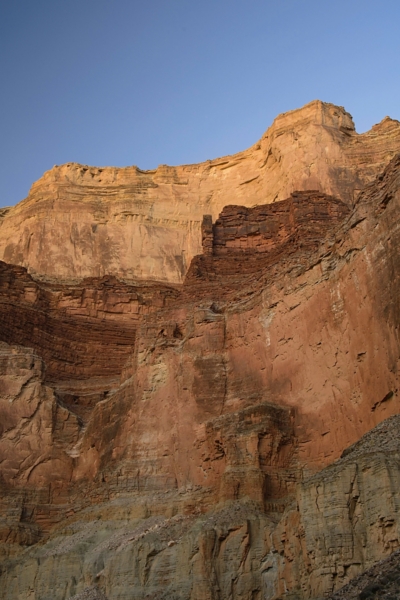
Cliffs of lower Marble Canyon across from Nankoweap Canyon.
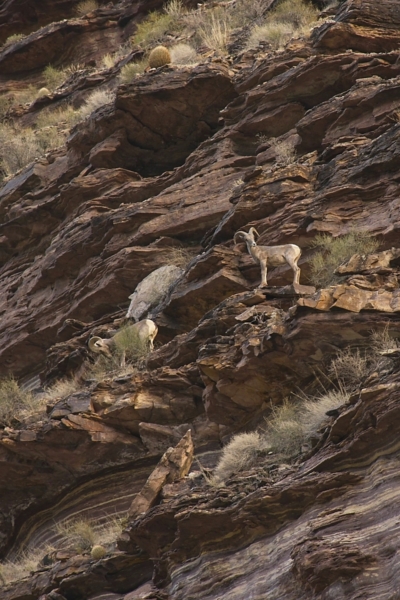
Desert bighorn sheep, Ovis canadensis nelsoni, on sandstone cliff ledges above the Colorado River.
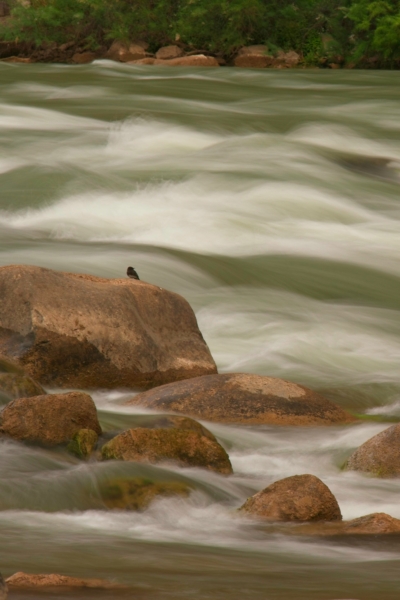
Black Phoebe resting while feeding over the river.
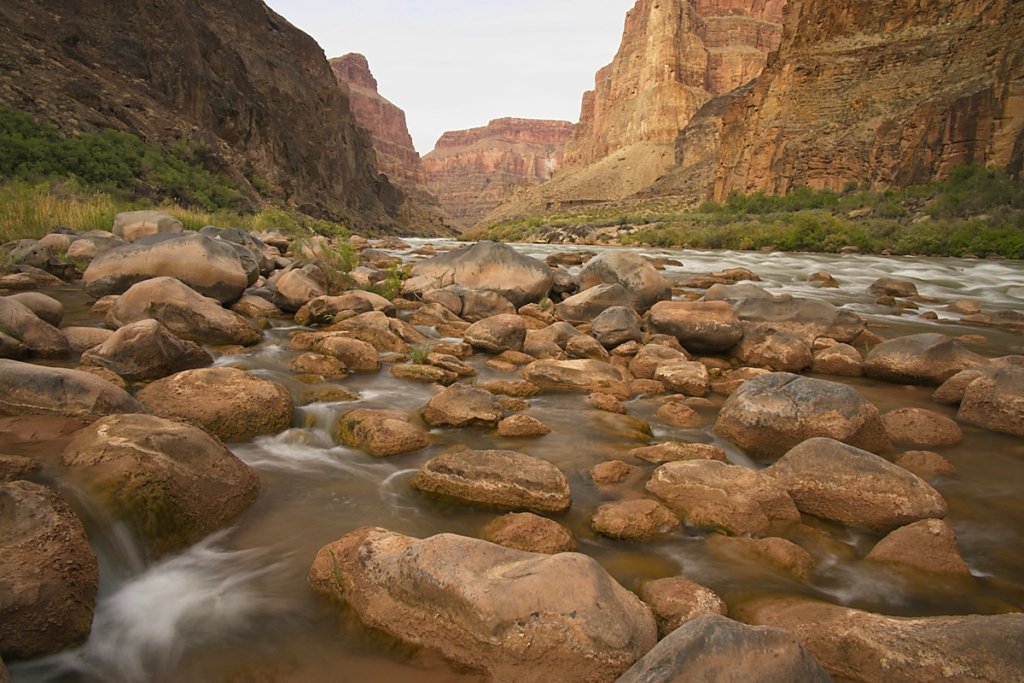
Last camp, below Lower Lava Falls Rapids.
As I tried to contemplate the Deep Time necessary for the rock formations we were witnessing, I couldn’t help but consider the thought processes of the group of Creationists we encountered on their own trip through the canyon. (They launched a few minutes ahead of us on Day One, so we kept leapfrogging each other for the entire week). When I first learned of the Creationist tour through the Grand Canyon, I hoped it might be a Richard Dawkins-inspired intervention. This was certainly the perfect place to face the reality of Deep Time Geology! But I learned later, during a short, passionate discussion by my truck at the Marble Canyon airstrip, that they really think the whole earth was created in six 24-hour days 6000 years ago. Their tour was with AIG, which stands for “Answers in Genesis,” not “Answers in Geology,” as one might hope. They had their own “astronomer” and “geologist” to explain the “evidence,” and this couple told me I should visit the ark in Kentucky. I tried to channel Neil de Grasse Tyson, and asked how they could possibly think the sedimentation, uplift, and erosion we had all just witnessed could all happen over 6,000 years (!) But no amount of hard evidence or rational reasoning will change the minds of these original (pre-political) conspiracy theorists.
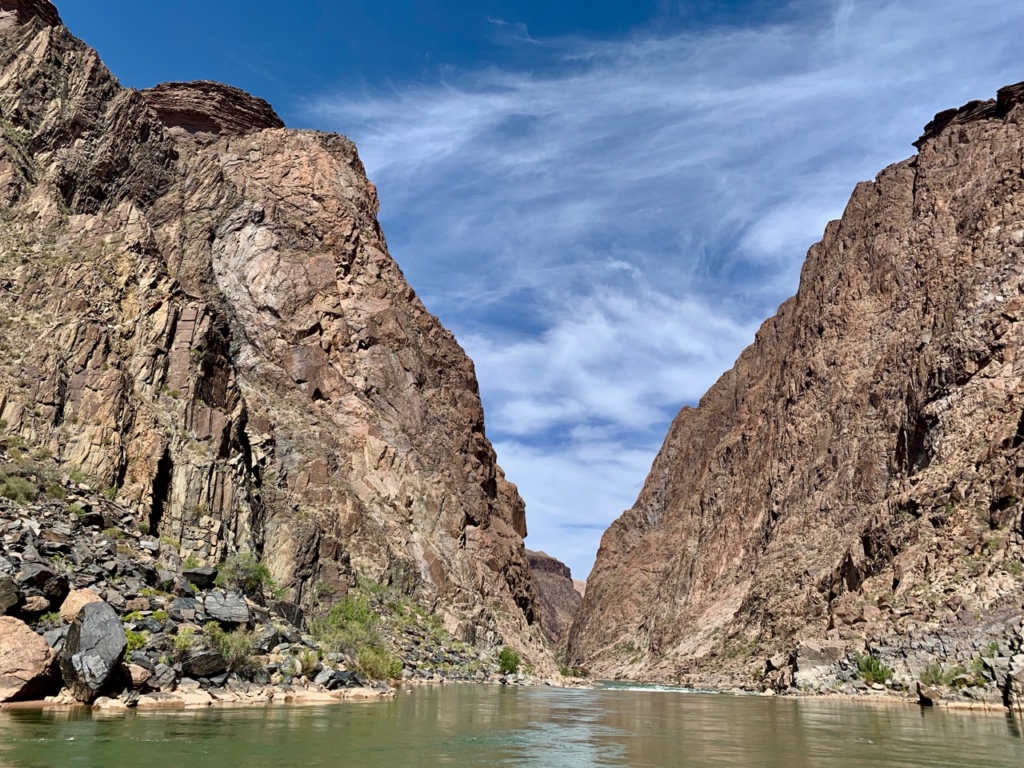
White river of cirrus clouds flows above the green Colorado River below.
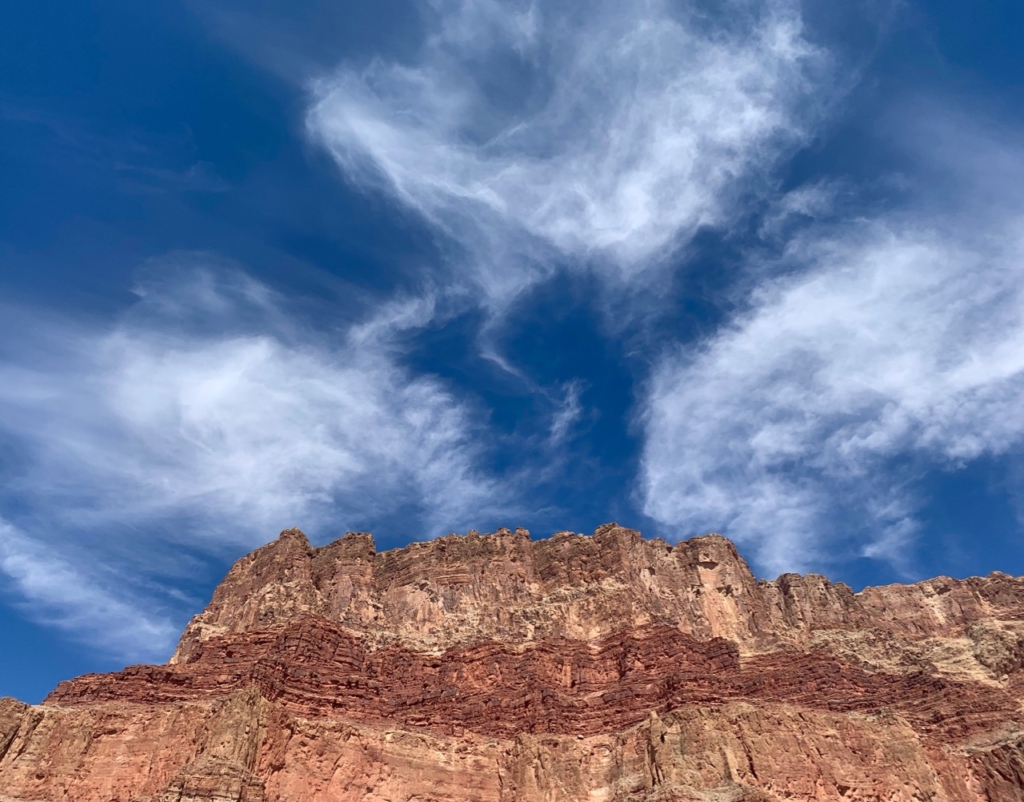
Cirrus clouds of ice crystals hang above really old sandstone.
Sad to end the trip with this encounter, I drove home to California while they drove home to South Dakota. But looking at my photos and videos of the Colorado River and a few of its tributaries, and remembering the sound of rushing water lulling me to sleep at night under the moon, stars, and feeding bats, makes me realize what a wonderful experience it all was.
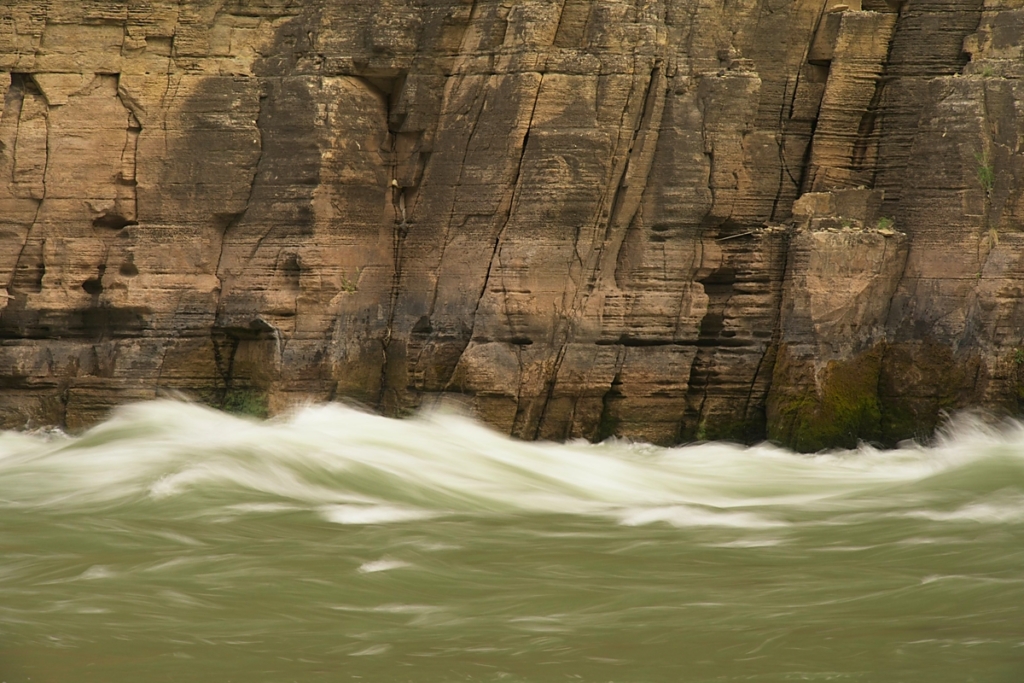
Wall of Tapeats Sandstone above rushing Colorado River.
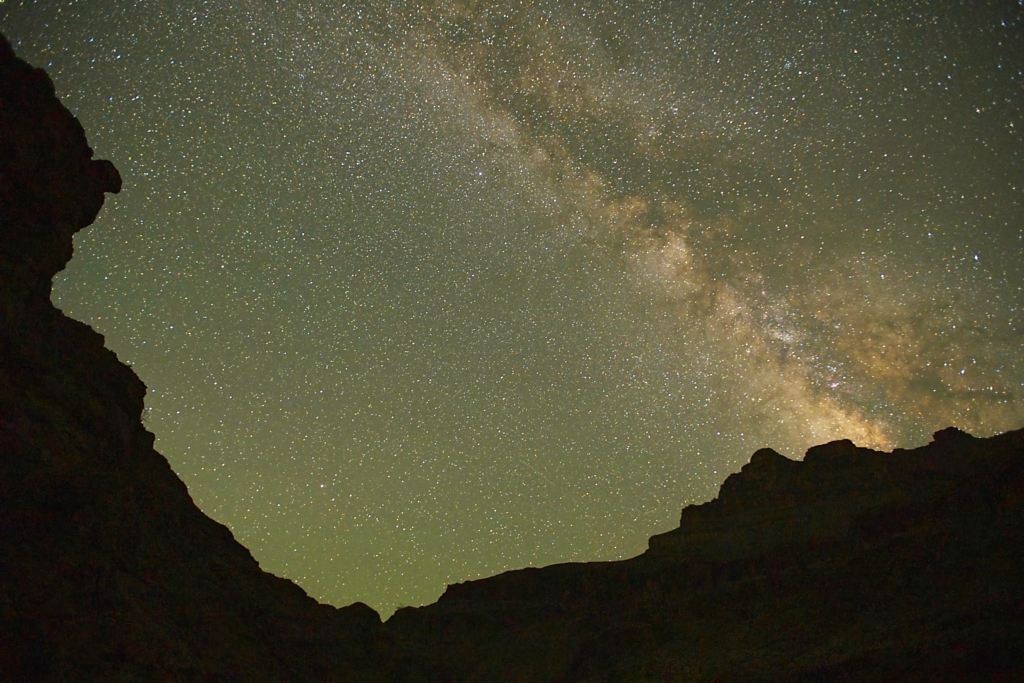
Milky Way from 110 Mile Camp along Colorado River.

